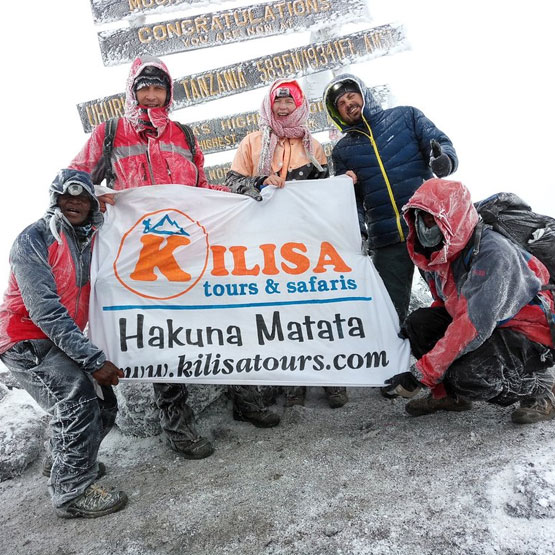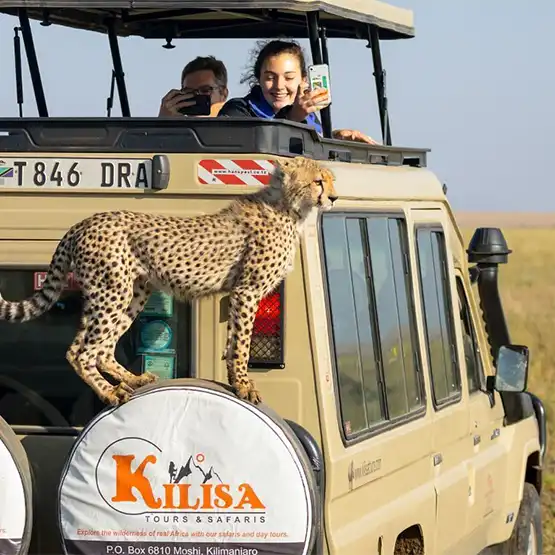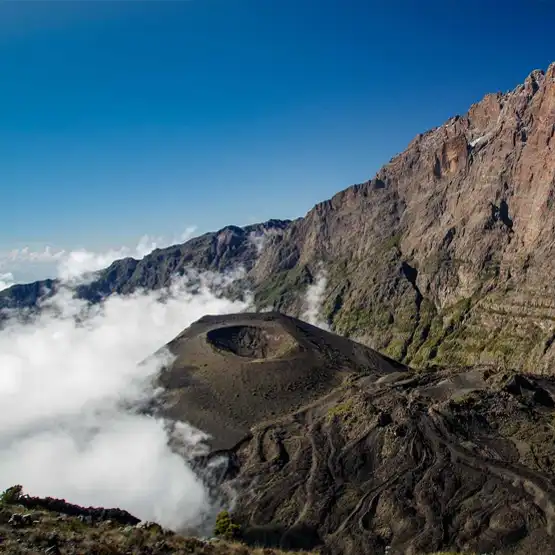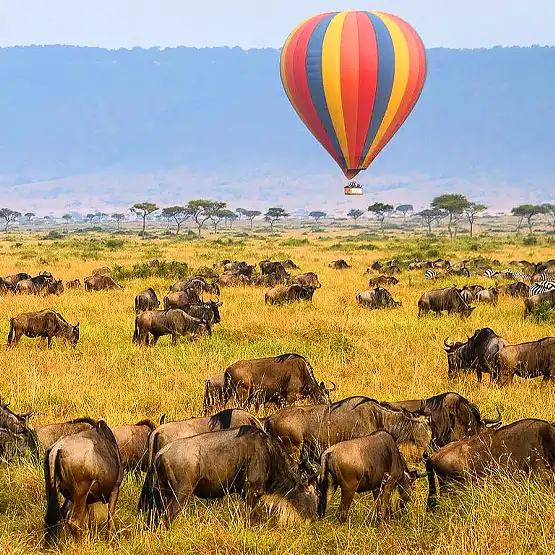Standing at 19,341 feet, Mount Kilimanjaro is Africa’s highest peak and draws thousands of adventure seekers each year. Booking a tour for such a monumental climb might seem daunting, but with the right tips and tricks, you can make the process seamless. One traveler shared how her early booking saved her thousands in travel costs and guaranteed a slot with a reputable operator.
To start, research is key—familiarize yourself with Kilimanjaro’s various routes and choose one that matches your fitness and experience level. It’s also crucial to book through registered and well-reviewed tour operators to ensure safety and a high-quality experience. Interestingly, booking at least six months in advance can not only save money but also secure your spot during peak seasons, maximizing your climbing adventure.
- Research the best season to climb Kilimanjaro, ideally between January to mid-March or June to October.
- Select a reputable tour operator like Kilisa Tours with good reviews and certifications.
- Choose the right route based on your fitness level and experience.
- Ensure the package includes essentials like permits, meals, and accommodation.
- Prepare physically with cardio and strength training exercises months in advance.
How to Book a Kilimanjaro Climbing Tour: Tips and Tricks
Booking a Kilimanjaro climbing tour begins with picking the right season. The best times to go are during the dry months of January to mid-March and June to October. These months offer the best weather conditions and fewer chances of rain. Choosing the right season not only enhances your climbing experience but also ensures your safety. For more details, check this post.
Next, you should research and select a trustworthy tour operator. Companies like Kilisa Tours provide experienced guides and thorough planning. Reading reviews and checking the company’s certifications are smart steps. Comparing packages can also help you find the best deal. According to this article, it’s essential to ensure the tour package includes food, porters, and necessary permits.
Fitness preparation is another significant step. Climbing Kilimanjaro is challenging, so it’s important to start training months in advance. Cardio exercises like running, hiking, and cycling can help. Strength training for your legs and core is also beneficial. Following a structured exercise plan will boost your chances of reaching the summit.
Don’t forget to pack all necessary gear. Essential items include layers of clothing, a good-quality sleeping bag, and sturdy hiking boots. A detailed packing list provided by your tour operator can be very helpful. Some operators might even rent out gear to save you some costs. Gear preparation ensures you’re ready for varying weather conditions.
Step #1: Choose the Right Season for Your Climb
Selecting the right season for your Kilimanjaro climb is crucial for a successful journey. The best months to climb are from January to mid-March and June to October. These periods have the most favorable weather conditions. There’s less rain and the temperatures are more manageable. This can make your climb safer and more enjoyable.
During these peak seasons, the trails are typically less muddy. However, it’s essential to prepare for possible crowds. Booking your tour well in advance can help you secure a spot. Also, choosing the right trekking route can help you avoid the busiest paths. It’s important to consider all factors to make the most of your climb.
If you prefer a quieter experience, consider climbing during the shoulder seasons. These are just before and after the peak months. While the weather can be more unpredictable, you might get solitude on the trails. Be prepared for cooler temperatures and some rain. Planning with flexibility can lead to a unique adventure.
Here’s a quick comparison of climbing seasons:
| Season | Advantages | Disadvantages |
|---|---|---|
| January to mid-March | Less crowded, warm and clear | Possible rain, cooler nights |
| June to October | Best weather, fewer bugs | More crowded |
| Shoulder Seasons | Quieter, unique experience | Unpredictable weather, cooler |
Choosing the right season involves balancing the advantages and disadvantages to fit your preferences and schedule.
Step #2: Selecting the Best Route with Kilisa Tours
Choosing the best route for your Kilimanjaro climb is essential for a rewarding experience. Kilisa Tours offers several routes, each with unique features. The most popular routes include Marangu, Machame, and Lemosho. Your choice will depend on factors like difficulty, scenery, and the duration of the trek. Consulting with Kilisa Tours’ experts can help you make the best decision.
The Marangu route, also known as the “Coca-Cola” route, is famous for its huts and gradual slope. This route is typically completed in five to six days. However, it tends to be more crowded because of its popularity. Machame, or the “Whiskey” route, is more challenging and scenic. Although it’s steeper, it offers breathtaking views and higher success rates.
For those seeking a more remote and adventurous climb, the Lemosho route is ideal. This route is less crowded and provides a longer trek. It usually takes seven to eight days, allowing for better acclimatization. The route traverses through diverse landscapes. Lemosho is highly recommended for its beauty and lower traffic.
Here is a quick comparison of the routes:
| Route | Duration | Highlights |
|---|---|---|
| Marangu | 5-6 days | Huts, gradual slope |
| Machame | 6-7 days | Scenic, higher success rates |
| Lemosho | 7-8 days | Remote, diverse landscapes |
Taking the time to select the right route with Kilisa Tours will ensure a well-planned and enjoyable climb.
Step #3: Understanding Fitness Requirements and Preparations
Preparing physically for a Kilimanjaro climb is crucial for your success. The mountain’s altitude demands good physical fitness and stamina. Most important is your cardiovascular health. This means activities like running, hiking, and even swimming can be beneficial. It’s also helpful to practice hiking with a loaded backpack.
Strength training is equally important. Focus on your core and leg muscles. Squats, lunges, and step-ups are great exercises. Adding weights to these routines can increase strength and endurance. Training regularly ensures your body is ready for the climb.
Flexibility exercises should not be overlooked. Stretching and yoga can enhance flexibility. This will help prevent injuries during the climb. Regular stretching keeps your muscles loose and comfortable. Flexible muscles can handle the uneven terrain better.
Here’s a sample training schedule:
| Day | Activity |
|---|---|
| Monday | Cardio (running or cycling) |
| Tuesday | Strength (squats, lunges) |
| Wednesday | Rest or light activity (yoga) |
| Thursday | Cardio (hiking with backpack) |
| Friday | Strength (step-ups, leg presses) |
| Saturday | Long hike |
| Sunday | Rest |
Lastly, it’s vital to listen to your body. Rest if you feel overly tired or injured. Overtraining can be harmful and set you back. Balance intense workouts with rest days. Proper preparation keeps you healthy and focused for the climb.
Step #4: Booking Your Tour and What to Look for in a Package
When you’re ready to book your Kilimanjaro tour, start by researching various operators. Look for companies like Kilisa Tours that have excellent reviews and a proven track record. Reviews from former climbers can be very insightful. Checking forums and travel websites can also provide valuable feedback. Remember, a reputable operator ensures a safer and more enjoyable experience.
Next, you’ll want to carefully examine what’s included in the tour package. Essential inclusions are permits, food, and accommodation. Some packages might offer extra amenities like gear rental and airport transfers. Comparing different packages can help you find the best value. Keep an eye out for hidden costs that might increase your budget.
Group size is another important factor. Smaller groups can provide a more personalized experience. They often result in better guide-to-climber ratios. This can lead to more support and a higher success rate. Large groups might be cheaper but can lack individualized attention.
Here are some key elements to consider when choosing a package:
- Permits and park fees
- Meals and drinking water
- Accommodation during the trek
- Experienced guides and porters
- Emergency medical assistance
- Gear rental options
Finally, don’t hesitate to ask questions before booking. Contact the tour operator and clarify any doubts. Inquire about their safety measures, guide qualifications, and customer support. A trustworthy operator will answer your questions openly and help you feel confident in your choice. This step is key to ensuring a successful and memorable Kilimanjaro climb.
Step #5: Preparing for Altitude and Acclimatization Techniques
Preparing for the altitude on Kilimanjaro is essential to avoid altitude sickness. As you climb higher, the air becomes thinner. This makes it harder for your body to get the oxygen it needs. Acclimatization is the process of adjusting to the lower oxygen levels. Proper preparation can greatly increase your chances of a successful summit.
One effective acclimatization technique is the “climb high, sleep low” strategy. This means you climb to a higher altitude during the day and return to a lower altitude to sleep. This method helps your body gradually adapt. It’s used by many climbers to prevent altitude sickness. This technique is often built into many Kilimanjaro itineraries.
Hydration is crucial when acclimatizing. Drink plenty of water every day. Staying hydrated helps your body adjust to the altitude. Avoid alcohol and caffeine as they can cause dehydration. Keeping your body hydrated ensures you stay healthy and alert.
Recognizing the symptoms of altitude sickness is also vital. Here are some common symptoms:
- Headache
- Nausea
- Dizziness
- Shortness of breath
- Fatigue
If you experience any of these symptoms, it’s important to descend immediately. Ignoring them can lead to more severe conditions. Listening to your body and responding quickly can prevent serious health risks. Always communicate with your guide about how you’re feeling. They are trained to help you manage altitude challenges safely.
Essential Gear and Equipment for Your Kilimanjaro Climb
The proper gear is crucial for a successful Kilimanjaro climb. Clothing layers are essential to handle the changing weather conditions. Start with moisture-wicking base layers. Add insulating mid-layers like fleece jackets or down vests. Finally, waterproof and windproof outer layers protect you from the elements.
A good quality sleeping bag is a must. Night temperatures on the mountain can drop significantly. Ensure your sleeping bag is rated for cold weather conditions. It should keep you warm at sub-zero temperatures. A sleeping pad can also add extra insulation from the ground.
Footwear is another important consideration. Sturdy, comfortable hiking boots are vital for navigating rough terrain. They should be well broken-in to prevent blisters and discomfort. Gaiters can keep debris out of your boots. Appropriate socks made from materials like wool help keep your feet dry and warm.
| Item | Description |
|---|---|
| Headlamp | For night-time visibility |
| Trekking Poles | Assist with balance on uneven ground |
| Sunglasses | Protects eyes from intense sun at high altitudes |
| Sunscreen | SPF-rated to protect skin from UV rays |
| Water Bottles/Camelbak | Keeps you hydrated throughout the climb |
Your daypack should contain personal essentials you need during the hike. This includes water, snacks, and extra clothing layers. It’s also smart to pack a first aid kit with basic medical supplies like bandages and pain relievers. Having easy access to these items makes your trek safer and more comfortable.
Kilisa Tours may provide some equipment but check their list beforehand so you don’t duplicate items or overlook something important.Keeping all this in mind will help ensure you’re fully prepared for an unforgettable adventure on Mount Kilimanjaro.
Benefits of Choosing Kilisa Tours for Your Climbing Experience
Kilisa Tours offers a wealth of benefits that can enhance your Kilimanjaro climbing experience. Their experienced guides are local experts with extensive knowledge of the mountain. This expertise ensures that you are well-prepared for any challenges you might face. The guides also provide valuable insights into the region’s culture and environment. Having knowledgeable guides makes the journey more enriching.
Safety is a top priority for Kilisa Tours. They provide high-quality equipment and enforce strict safety protocols. This includes regular health checks and emergency procedures. Climbers can rest assured knowing that their well-being is in capable hands. Their commitment to safety is unmatched.
The company also prides itself on offering customized experiences. Whether you are a solo traveler or part of a group, Kilisa Tours tailors the climb to meet your needs. They offer various routes to suit different skill levels and preferences. This flexibility makes it easier for climbers to achieve their goals. Personalized service adds a special touch to the adventure.
Here are some highlights of Kilisa Tours’ packages:
- Comprehensive meal plans to keep you energized
- Accommodation in mountain huts or high-quality tents
- Porters to carry your gear
- Environmental stewardship practices
- Cultural immersion opportunities
Moreover, Kilisa Tours is dedicated to sustainable tourism. They follow eco-friendly practices to minimize their impact on Kilimanjaro’s ecosystem. This includes proper waste disposal and supporting local communities. By choosing Kilisa Tours, you contribute to conservation efforts. Responsible tourism helps protect the mountain for future generations.
Understanding the Environmental Impact and Sustainability Practices on Kilimanjaro
Climbing Mount Kilimanjaro comes with an environmental impact that must be acknowledged. The increasing number of climbers contributes to waste and trail erosion. To mitigate these effects, strict regulations are in place. These rules ensure the preservation of the mountain’s natural beauty. Following them is essential for sustainable tourism.
One major concern is waste management. Climbers are required to pack out all their trash. This helps keep the trails clean and reduces pollution. Many tour operators, including Kilisa Tours, emphasize the importance of responsible waste disposal. Portable toilets are also used to manage human waste effectively.
Trail erosion is another issue caused by heavy foot traffic. To combat this, designated paths are maintained. Straying from these paths can cause significant damage to the terrain. Staying on marked trails helps preserve the natural habitat. Efforts are continuously made to repair and maintain these routes.
Supporting local communities is a key part of sustainable tourism. Many tour operators work with local guides and porters. Here are some benefits:
- Economic support for local families
- Promotion of cultural exchange
- Encouragement of community development projects
Conservation programs are also in place to protect Kilimanjaro’s ecosystem. These programs focus on reforestation and wildlife protection. Tour operators like Kilisa Tours often take part in these initiatives. By supporting these efforts, climbers can contribute to the mountain’s long-term health. Sustainable practices ensure that Kilimanjaro remains a pristine destination for everyone.





